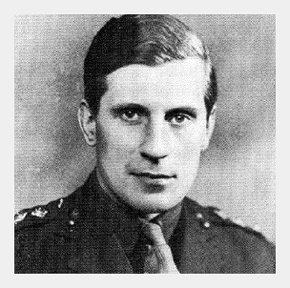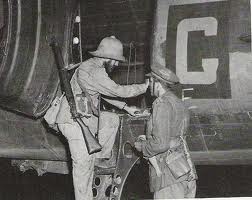As conventional forces went, they were an unconventional bunch.
The unit was weighed down by equipment (70 pounds of gear per man), experience (most were second-line reservists) and age (older draftees). Their leader was forged in the classic mold of the British eccentric, perfect for a forgotten front against a larger opponent filled with combat veterans. But neither the obstacles or the odds daunted the men of the King’s Liverpool Regiment and 2nd Gurkha Rifles, together better known to history as the Chindits, as the crossed into Japanese-controlled Burma on February 8th, 1943. Their mission would be part of the beginning of the modern-era of Special Forces.
…
The Burma that the Chindits marched into was far from friendly territory – even before the Japanese invasion.
Burma had been among the last of the British possessions captured in the colonial era. The Anglo-Burmese wars of the mid-19th Century sapped the Burmese monarchy and military, leading to fall of the capital Rangoon after the Third Anglo-Burmese war and the absorption of Burma into a province of India in 1886. The Burmese populace responded with a grueling four-year guerrilla war followed by decades of hostility.

The Rising Sun In Burma: the Japanese were welcomed as liberators but massacres of civilians like at Kalagong village quickly revealed the Japanese as far more brutal colonial masters
At the outbreak of hostilities, the fig-leaf of liberation covering Japanese colonialism, the “Greater East Asia Co-Prosperity Sphere”, found many willing participants in Southeast Asia. Thai allies and Burmese collaborators joined the Japanese 15th Army as it slowly made its way through the thick jungle. A captured Burma would place Japan on the doorstep of the crown jewel of the British Empire – India – and would cut off the Allies’ ability to supply Chiang Kai-shek’s Chinese nationalists from the port of Rangoon.
While the British acquitted themselves far better in Burma than elsewhere on the Pacific Front (the Japanese didn’t reach the Burmese/Indian border until May of 1942), the end result was still a slow-motion Allied disaster. The Burma Corps barely escaped complete destruction and limped into Imphal, India. The Chinese Expeditionary Force in Burma, placed under the command of American General General Joseph Stilwell, lost half their strength and was effectively eliminated as a fighting force. If not for the monsoons, the path for Japan into India would have been clear.

Rarely in this series have any of the many colorful personalities we’ve covered returned in another setting. And when we last saw Major-General Orde Wingate, he certainly looked likely never to return to prominence in any meaningful way. Having led the Gideon Force of irregulars against Mussolini’s East African “Empire”, Wingate was looking for another posting. But his talent for forming guerrilla forces was in little demand. Nor did it help that Wingate was considered mentally unstable, as he wore raw garlic around his neck, compared himself to Napoleon, and frequently did military briefings, well, without briefs. Only his political connections and support from Winston Churchill, who viewed him as the war’s T.E. Lawrence, brought him to Burma.
Arriving amid the fall of Rangoon, Wingate set out scouting locations for his own version of irregular warfare, or as Wingate referred to it, “long-range penetration.” Unlike Abyssinia or Palestine (were he trained many future Israeli military leaders), Wingate knew he couldn’t rely on recruiting native forces. Rather, Burmese guerrillas and Japanese infiltrators had been the ones to compromise British supply and communication lines. Wingate hoped to turn the tactic back on the Japanese and keep the numerically superior Imperial Army tied in knots in Burma.

A young Orde Wingate: the picture is the opposite of two of his better-known trademarks – no beard and plenty of clothes
But neither Wingate’s personality nor concept were popular with the Far East Command. Only 60,000 British & Indian troops could be spared for the Burmese Front against a Japanese force of an estimated 314,000. Most British troops were dedicated to supporting forces keeping the peace in India amid the “Quit India” Movement, fueled in part by a crippling famine in Bengal that claimed at least 1.5 million lives. What good could come of placing thousands of British troops behind enemy lines?
For nearly a year, the British and Japanese stared each other down across the Indian/Burmese border. Several minor British counterattacks in late 1942 found that the Japanese Army had dug themselves in with massive concrete bunkers. Stymied by conventional attempts to disrupt Japanese forces, the Far East Command reluctantly turned to Wingate.

The Chindits’ greatest opponent was Burma itself. Disease and pure physical exhaustion decimated the unit more than the Japanese
Wingate called his force the “Chindits”, a corruption of the Burmese mythical beast Chinthay, a half-man, half-lion creature that protected Buddhist temples. The men would almost have to be mythical to endure Wingate’s mission. In addition to each man’s rifle, a Chindit was expected to carry a light machine gun, ammo for multiple men, grenades, a machete or Gurkha kukri knife, 7-days worth of rations, medical supplies, communications gear and even a change of uniform. Although the unit had hundreds of mules, the men were expected to carry more weight than the animals. Worse? Wingate’s orders were to leave all wounded behind. If you were injured or became too sick to keep up, you were left to die. The only real connection to command were six planes that would drop supplies. For all intents and purposes, Orde Wingate (who led from the front) and his 3,000 men were going off to conduct their own personal war.

Man v. Mule: the Chindits had only 56 mules per column (mules required more care than men), meaning the unit had to carry weeks worth of gear on their own backs
That Wingate went off alone had not been part of the British strategy. The intention had been for a full-scale invasion, of which Wingate’s Chindits would play a minor role harassing the enemy and sabotaging their ability to reinforce quickly. Despite the offensive being scrapped, Wingate was able to persuade his superiors to let him go anyway. The result was a mixed bag.
The Chindits, divided into two groups, managed to blow up the main north-south Burmese rail line and forced larger Japanese units to track their movements. They planted misinformation, complete with a member of the unit dressed up as a British General who bombastically announced his presence (and fake battle plans) in every Burmese village. The Japanese were soon fighting ghosts, seeing divisions around every blade of grass.
But the operational effects were minimal. The rail system was functional within a week and after three months in the jungle, fighting the more powerful opponents of malaria and dysentery, the 3,000-man Chindits returned with only 1,400 combat-ready troops. The rest were either killed, captured, or so physically and mental broken that they were discharged from service. The Far East Command looked at the results and scoffed.
Wingate did not.

Rows of Bayonets: the Japanese Army in Burma was over 300,000, with an additional 80,000 Burmese & Thai allies. The Joint British/Chinese forces opposing them never exceeded 160,000 troops
Despite his eccentricities, Wingate understood propaganda and political relations and ensured that his Chindits received plenty of both. The aura of the Japanese super-soldier, who could endure the extreme jungle conditions and win, had been dented. The Chindits proved that a light force, operating with minimal support, could maintain themselves in the field for months at a time behind enemy lines. A larger force, working in support of a broader offensive, might crack the stalemate in Burma. Wingate hadn’t won over his direct superiors but he did convince Churchill and the Americans to further back his experiment. The US even began to form their own Chindits, affectionately known as “Merrill’s Marauders” after the unit’s commanding officer Frank Merrill.
The support transformed the Chindits. From a 3,000-man force in a backwater battlefield, the Chindits were now the 3rd Indian Infantry Division, made up of 6 brigades of British, Gurkha and Indian troops. For this bolder force, Wingate proposed a bolder objective – establish bases in enemy-occupied Burma. There would be no “offensive”, just large pockets of resistance, supported by the USAAF 1st Commando Unit, that would led raiding parties even deeper into Burmese territory. The move was incredibly risky. Wingate was done hiding in the jungle. He would operate in front of the Imperial Army’s face and dare them to stop him.

Precious cargo: Wingate boards his last flight
On Feb 5th, 1944, 9,000 men landed in drop make-shift drop zones given the code names Piccadilly, Broadway and Chowringhee. These were no hidden bases but full-fledged military camps, held by artillery, anti-aircraft guns and even airfields. And most of these camps were strategically placed right next to major Japanese transportation paths in northern Burma, designed to put pressure on the expected Japanese invasion of India. The Japanese furiously attacked in late March and despite being outnumbered, with little air support and tough, hand-to-hand fighting, the Chindit’s forward bases held.
Wingate’s risk had paid off handsomely. The Japanese invasion of India, launched in early March of 1944, was forced to hold back units to clear the Chindits off their supply routes and failed. The lack of reinforcements hindered the invasion and contributed to the (at the time) worst military defeat in Japanese history – over 55,000 casualties in the abortive attempt to capture India.

The Chindit Lifeline: Wingate’s gamble was that aircraft could keep a unit supplied behind enemy lines. It hadn’t worked for the Germans in Stalingrad, but it worked for the British in Burma
Wingate would not get to see his gamble pay dividends. On March 24th, 1944, amid the heaviest of the Japanese counterattack against the Chindit positions and with the Japanese 15th Army advancing in India, Wingate flew back to Imphal to plead for more air support. Flying into a thunderstorm, Wingate’s plan crashed, killing all aboard.
…
Without their charismatic and politically connected leader, the Chindits found themselves adrift on the Burmese front. Transferred to General Stilwell’s Chinese X-Force, the Chindits’ Special Forces touch was abandoned in favor of conventional assaults against fortified Japanese positions. They might as well have run directly into a meat grinder. The Chindits suffered a 50% casualty rate and the unit was in essence disbanded as survivors were scattered among other divisions.
The Chindits military effectiveness has been questioned ever since. Most of the criticism has come from regular British Army officers, such as Gen. William Slim of the 14th Army who decried the “cult” of Special Forces. Commando units certainly existed in all of the major armies (as Mitch has written about extensively), but Wingate combined the precision of Special Forces with the scale of regular army units. The move rankled the regular army, especially as it came from a man whose manner and appearance was not befitting a British officer.
The Chindits would eventually find their vindication within the British Army. Today, “Chindit” denotes special barracks, sections or programs of action and is a term still in use with the British armed forces. Somewhere, Orde Wingate is smiling.
